"Prediction is very difficult, especially if it's about the future." -Neils Bohr
As many of you know, the Big Bang is one of the most powerful scientific theories we have.
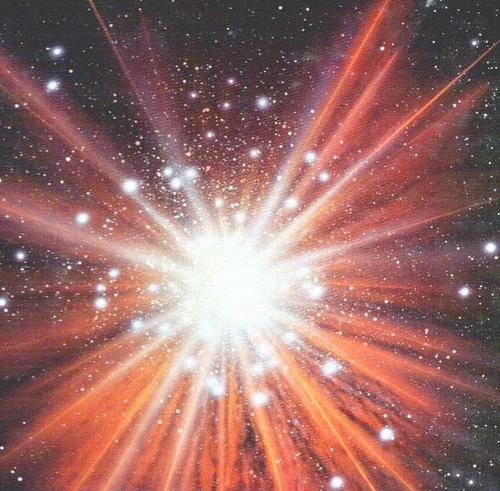
It's also one of the most unsettling. The idea that our entire Universe -- filled with practically a trillion galaxies -- is only three times as old as our Sun and was once compressed into the size of your thumb is pretty unsettling.
As an astute commenter noted earlier this week,
I'm asking what persuasive predictions BB has to its credit. Most usually the best I see is new observations favoring one BB variant over another, with some variant or other predicting every possible outcome.
I often speak about the cosmic microwave background, nucleosynthesis of the light elements, and the formation of large-scale structure as strong pieces of evidence for the big bang, and this is completely true.
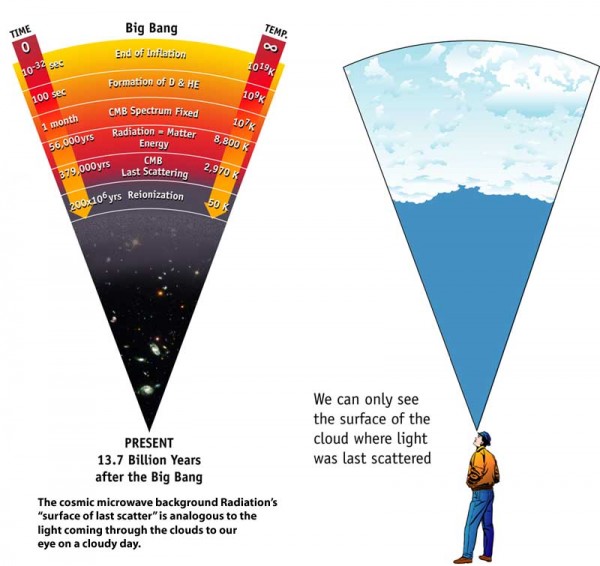
Well, there is one last prediction that the Big Bang Theory makes that we have not yet been able to successfully test. Just as there is a cosmic background of photons predicted by the big bang,
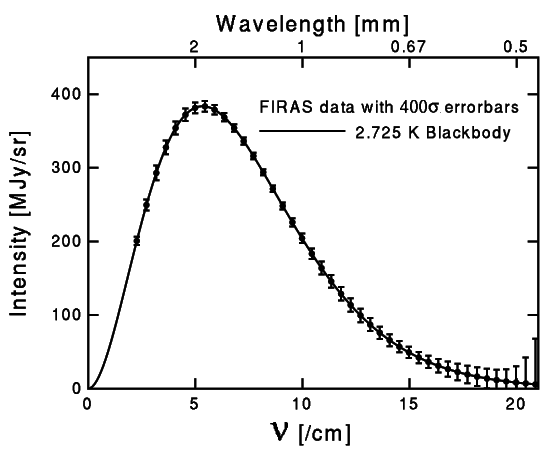
there should also be a cosmic background of neutrinos!
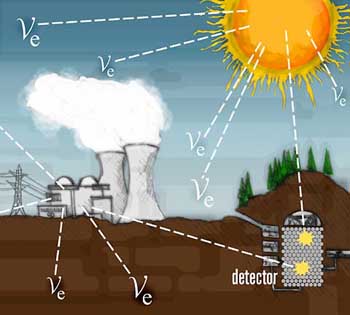
A neutrino is a tiny particle produced either by radioactive decays or by nuclear reactions in stars or power plants. Or, if you ask the big bang what it predicts, during the first two or three seconds of the Universe.
Although neutrinos are hard to detect, we've been able to do it by building giant tanks of water with something like 1035 protons in it, capable of registering and measuring the energy a single, solitary hit from a neutrino.
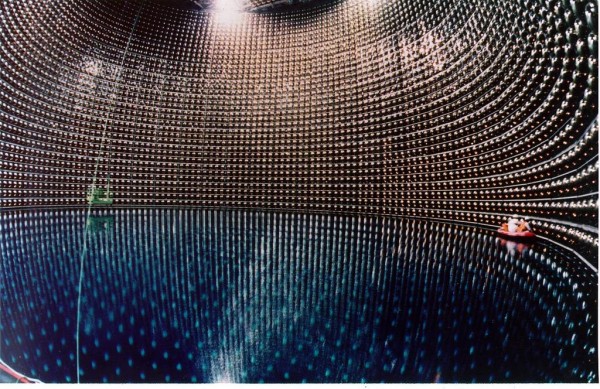
Neutrinos, which come in three types, are fun little things. Although they have an incredibly low mass -- the heaviest may be 10 million times lighter than an electron, the next lightest particle -- they do weigh something! (As opposed to photons, which weigh nothing!)
Early on in the big bang model, neutrinos acted just like radiation, since the amount of energy they had was much larger than their mass. But today, the Universe has cooled an incredible amount. While the photons have a temperature of 2.725 Kelvins and a density of about 400 photons per cubic centimeter, the neutrinos are even cooler (at only 1.95 Kelvin) and less dense (there are only about 100 of each type per cubic centimeter).
And while the big bang predicts this neutrino background exists, we have not yet detected it directly.
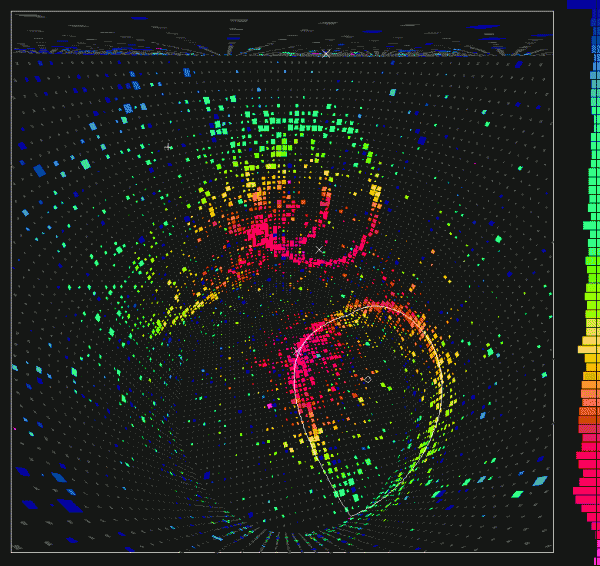
Why not? After all, we do detect neutrinos, as shown above for an event at Super-Kamiokande. Why can't we detect these neutrinos?
They're simply not energetic enough. Neutrinos with more energy are easier to see, and these neutrinos have less kinetic energy than a single atom moving at the speed of a slug.

Only, the slug (or even the atom) makes its presence felt. We don't know how to see neutrinos of such low energy, but according to the big bang, millions of these leftover neutrinos from the big bang are passing through your body every second!
These neutrinos can't be the dark matter (they're neither heavy enough nor cold enough to form the proper structure), but they are expected to fall into each galaxy in a giant halo-shape.
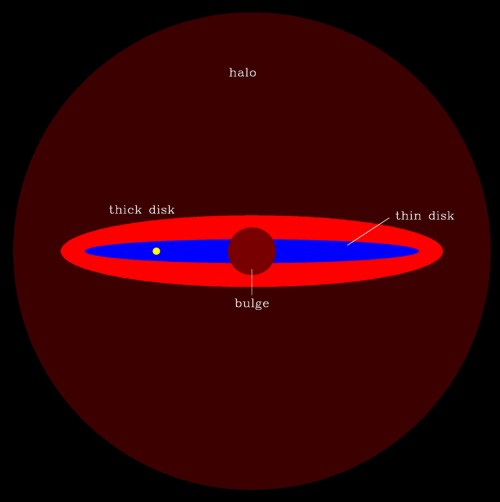
So that's what the big bang predicts, and as far as I know, this is the last unverified prediction of the big bang. It's a great one, and I think if this thermal, low-energy neutrino background is discovered, many of the doubters will finally be silenced.
Of course, nobody knows how to detect this neutrino background, yet, myself included! But every once in a while I come back to thinking about this problem, because there's got to be a way to find out for sure. Any ideas among you?

Is the singularity god still in place?
Maby huge neutrino detector filled with liquid hydrogen. If liquid would be cold enough and atoms light enough, noise would be low enough and it would detect light energies also.
Engineering and maintenance should be fun. Thousands of tons of liquid hydrogen. ;)
You would need SERIOUS heat isolation and "nice" heat pumping system.
Well, I suppose you need to have some kind of capture/detection mechanism for these ultra-low energy neutrinos, and perhaps a bose-einstein condensate can act as a gasseous bath for these low-yield neutrinos. Even some type of supercooled degenerate gasses that can act as liquid can be used instead, which would then be contained in a special barrier and surrounded with detectors. I don't necessarily have the applied physics necessary to determine how these forms of matter would change upon neutrino interactions and their subsequent detection, but this does fall into one of those Zwicky inspired morphological analysis problems.
@Ethan:
Aren't there also some as yet unverified predictions for gravitational waves from inflation?
Neutrino detector on the far side of the Moon. There is a significant amount of time when the Earth is between the Sun and Moon. This would allow us to remove the solar neutrinos more easily through directionality detection. Using lunar water, we could make a detector much larger than any on Earth.
The real question I have is about the mass difference. Do you think that there is an evening out to equal amounts of the three flavors or would there be a tendency over the age of the universe to favor on mass over the other two. I haven't thought about that discussion, so ideas would be welcome.
The ingenuity of experimentalists is amazing; their limits are technology, imagination and nature. Which means that if the best theory disagrees with nature; then the best experiments will return excellent null results again and again; hence Michelson-Morley.
Maybe one day experimentalists will build a low energy neutrino detector. That would be amazing. But will they find a low energy neutrino background?
LIGO and other gravitation wave detectors have been built and running for a dozen years; but will they ever find gravitation waves or are they the most important null result since Michelson-Morley and certainly the most expensive null result in the history of science?
LHC has been built and will produce some amazing positive results; but will it discover a new particle with properties suitable for the apparent dark matter?
Has anyone predicted a low energy apparent dark energy background yet; more importantly has any experimentalist sought or gotten funding to build such a detector?.
I predict that the BBT will to continue to morph until even Gamow might think it is a steady state model. Of course, that isn't a scientific predictions. That is a personal bias or philosophical opinion. I will be watching to be surprised by experiment.
Yes it was a bummer that neutrinos have mass.
I think everything will turn out to be made of lego. Minutely small lego, obviously. Of course, that isn't a scientific prediction. That is a personal bias or philosophical opinion. I will be watching to be surprised by experiment.
Enjoyed reading the article! Did grimmace however at the term "silenced". Perhaps rather their arguments would be defeated? As a layman, just saying.
Ethan,
quantum weak measurement.
I think that would do the trick for detecting neutrinos and dark matter. I'm working on a laser-based setup in my head...
I've once read that the last prediction of the BB involves a background radiation of gravity waves. They burst into existence when gravity separated itself from the other 3 forces, 10 to the -43 seconds after the BB.
So if we could monitor that initial gravity radiation, we could look back in time even further than with neutrinos.
*Niels
"it's tough to make predictions, especially about the future."
Neutrino detector on the far side of the Moon. There is a significant amount of time when the Earth is between the Sun and Moon. This would allow us to remove the solar neutrinos more easily through directionality detection. Using lunar water, we could make a detector much larger than any on Earth.
Solar neutrinos blow through the Earth like a bullet through smoke. It takes a light-year-thick piece of lead just to stop 50% of neutrinos from passing through. That's why neutrino detectors are buried so deep. Just about the only particles that can reach that deep are neutrinos and super-high energy cosmic rays.
Ethan: You "often speak about the cosmic microwave background, nucleosynthesis of the light elements, and the formation of large-scale structure as strong pieces of evidence for the big bang, and this is completely true". It's completely true that you often speak of them, but it's dishonest to insist that those amount to strong evidence in its favor.
Every conceivable steady-state model also implied a universal temperature, and therefore blackbody radiation, and therefore a CMB, so despite repeated insistence of big-bangers, its mere presence indicates nothing. Light-element estimates have varied over the years, and BB has been found to "predict", with great precision and equally well, each new measurement. Large-scale structure was an enormous and vexing surprise when it was discovered. It was seen as flatly contradicting BB until someone discovered a way to jimmy the theory to permit it. To claim it now as a confirmed prediction is "pants-on-fire" dishonest.
None of those amount to differentiating predictions. The first was predicted by all extant models. The last two weren't predictions in any honest sense, as they were observed first and then hacked into the theory after the fact, the last with extraordinary difficulty. The evidence you present as most convincing makes BB look more like special pleading.
Why not present actually persuasive evidence, instead of flimflam and historical revisionism? It appears to me that there really is some good evidence of recent vintage. You could distinguish yourself by admitting that earlier evidence was nowhere near as strong as Gamow and Smoot insisted.
Nathan,
You might want to read this amazing interview with Jim Peebles, who was one of the founders of physical cosmology, which is not only what my specialty is, but was my PhD advisor's PhD advisor.
The steady state models imply a universal temperature that is very different from the Big Bang's, and are inconsistent with the observed temperature, unlike the Big Bang.
Light Element estimates for all four light elements (deuterium, helium-3, helium-4, and lithium-7) depend only on one parameter: the baryon-to-photon ratio. As estimates of that varied, so did the light element estimates. That is now nailed down to be 6.1 x 10^(-10).
Large Scale Structure was Peebles' specialty (he wrote the book on it, in 1980), so of course predictions in that field weren't developed until he, Zel'dovich, and Harrison (and others, like Joe Silk) developed it in the 1960s and 1970s.
I don't know what you think the history of this was, and where you learned it, but I'd be curious to learn who your sources are.
And Bjoern, there are lots of unverified predictions about inflation, and also about gravitational waves!
Note that there are other possibilities for a gravitational wave spectrum than the one predicted by most inflationary models. See, for example, this one.
Wow Ethan that's an excellent prediction in a whole nother dimension (literally). I did not know this.
By the way despite my skepticism; there is nothing more that I'd rather see than a scientific prediction (such as the cosmic neutrino background)verified. While I am sketical; I would be overjoyed indeed by such a discovery.
Matt, Jonathon - the killer isn't the shielding or amount of water (although they're limiting factors). Water detectors detect neutrinos via the detection of the charged byproduct particles of neutrino interactions in water. You never the detect the neutrino itself, you detect what it makes when it slams into an oxygen atom. Neutrinos have to have enough energy to create these charged particles. That means they must at least have an energy equivalent to the electron mass - which is much much larger than the predicted energy of a relic cosmological neutrino. We can only do this detection indirectly. We
need to be cleverer and we're not yet...
Above # 14 Ethan links to "This amazing interview with Jim Peebles". Well I've finally gotten time to read it. It is very long, very readable and slow to get interesting interview; but it does build to become amazing. I'll need to read it several more times. Peebles tracks the details and the history of cosmology observation, experiment and the possible alternative theories to an extent that is inspiring. Wow!
Could those relic neutrinos be dark matter? Could dark energy be the relic gravitational radiation?
@daedalus:
They contribute to dark matter, but according to all we know, they probably make up only a tiny part of all dark matter.
No. Gravitational radiation has no negative pressure.
Ethan, thanks for writing about this neutrino prediction. We'll keep an eye out for more information on this. The whole matter of big bang predictions seems to be far more complicated than generally presented. I've begun assembling a List of Big Bang Predictions, including historical quotes, references, and so on. So thanks for exploring these ideas.